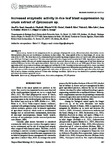Por favor, use este identificador para citar o enlazar este ítem:
http://www.alice.cnptia.embrapa.br/alice/handle/doc/970331Registro completo de metadatos
| Campo DC | Valor | Lengua/Idioma |
|---|---|---|
| dc.contributor.author | SENA, A. P. A. | pt_BR |
| dc.contributor.author | CHAIBUB, A. A. | pt_BR |
| dc.contributor.author | CORTÊS, M. V. C. B. | pt_BR |
| dc.contributor.author | SILVA, G. B. | pt_BR |
| dc.contributor.author | SILVA-LOBO, V. L. | pt_BR |
| dc.contributor.author | PRABHU, A. S. | pt_BR |
| dc.contributor.author | FILIPPI, M. C. C. | pt_BR |
| dc.contributor.author | ARAÚJO, L. G. | pt_BR |
| dc.date.accessioned | 2013-11-05T11:11:11Z | pt_BR |
| dc.date.available | 2013-11-05T11:11:11Z | pt_BR |
| dc.date.created | 2013-11-05 | pt_BR |
| dc.date.issued | 2013 | pt_BR |
| dc.identifier.citation | Tropical Plant Pathology, Brasília, DF, v. 38, n. 5, p. 387-397, set./out. 2013. | pt_BR |
| dc.identifier.issn | 1982-5676 | pt_BR |
| dc.identifier.uri | http://www.alice.cnptia.embrapa.br/alice/handle/doc/970331 | pt_BR |
| dc.description | Epicoccum sp. showed in vitro antagonism to the rice pathogens Magnaporthe oryzae, Rhizoctonia solani, Sarocladium oryzae, Monographella albescens and Cochliobolus miyabeanus in dual culture. The colony growth of the rice blast fungus, M. oryzae, was reduced by 42.50%. The lethal doses (LD50) determined based on probit-log dosage response curves at 3 and 6 hours after germination were 393.0 and 326.6 ppm, respectively. The crude extract (600 ppm) reduced appressorial formation by 95.68%. A greenhouse experiment comparing the relative efficiency of conidial suspension and crude extract of Epicoccum sp. in the suppression of leaf blast showed no statistical difference between both application methods. However, the crude extract of Epicoccum sp. (4000 ppm) 48 hours before the application of M. oryzae induced resistance and suppressed leaf blast by 97.6%. Scanning electron microscopy of rice leaves inoculated with crude extract of Epicoccum sp. and challenged with M. oryzae showed appressorial deformation on penetration phase. Peroxidase and β-1,3-glucanase activities increased in plants sprayed with crude extract of Epicoccum sp., 24 hours after the application of the challenger. PAL as well as chitinase activities increased 72 hours after challenge inoculation. Epicoccum sp. was shown to be a potential antagonist and inducer of resistance against M. oryzae. | pt_BR |
| dc.language.iso | eng | eng |
| dc.rights | openAccess | eng |
| dc.subject | Epicoccum sp | pt_BR |
| dc.title | Increased enzymatic activity in rice leaf blast suppression by crude extract of Epicoccum sp. | pt_BR |
| dc.type | Artigo de periódico | pt_BR |
| dc.date.updated | 2013-11-05T11:11:11Z | pt_BR |
| dc.subject.thesagro | Arroz | pt_BR |
| dc.subject.thesagro | Oryza sativa | pt_BR |
| dc.subject.thesagro | Brusone | pt_BR |
| dc.subject.thesagro | Doença de planta | pt_BR |
| dc.subject.thesagro | Antagonismo | pt_BR |
| dc.subject.nalthesaurus | Magnaporthe oryzae | pt_BR |
| riaa.ainfo.id | 970331 | pt_BR |
| riaa.ainfo.lastupdate | 2013-11-05 | pt_BR |
| dc.contributor.institution | ANA P. A. SENA, UFG; AMANDA A. CHAIBUB, UFG; MARCIO VINICIUS DE C BARROS CORTES, CNPAF; GISELE B. SILVA, UFRA; VALACIA LEMES DA SILVA LOBO, CNPAF; ANNE SITARAMA PRABHU, CNPAF; MARTA CRISTINA CORSI DE FILIPPI, CNPAF; LEILA G. ARAÚJO, UFG. | pt_BR |
| Aparece en las colecciones: | Artigo em periódico indexado (CNPAF)  | |
Ficheros en este ítem:
| Fichero | Descripción | Tamaño | Formato | |
|---|---|---|---|---|
| mcf.pdf | 2,08 MB | Adobe PDF |  Visualizar/Abrir |









